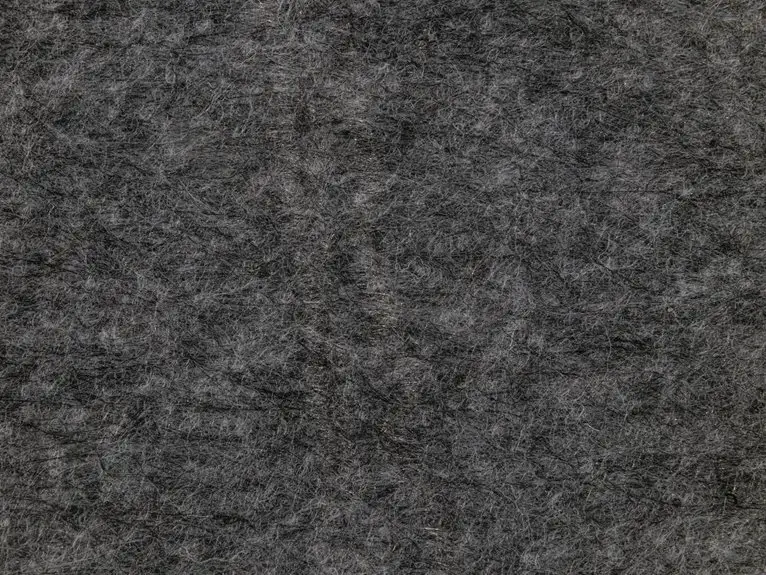If you’re choosing jute fabric for your sofa, look for durable, eco-friendly options with a coarse texture that adds rustic charm and breathability. Consider blended jute for extra strength, and pick weaves like twill or basket for style variety. Remember to check fabrics’ color and pattern to match your decor, and always confirm quality before buying. Understanding care tips and eco advantages helps you make a lasting, sustainable choice. More insights on selecting the perfect jute fabric await you.
Table of Contents
Key Takeaways
- Choose natural or blended jute fabric based on desired durability and texture for your sofa upholstery.
- Opt for plain, twill, or basket weave patterns to match your interior style and comfort preferences.
- Prioritize eco-friendly jute fabric sourced sustainably to support biodegradability and reduced environmental impact.
- Maintain jute upholstery with regular vacuuming, spot cleaning, and protection from direct sunlight to enhance longevity.
- Purchase from trusted suppliers offering quality jute fabric with clear descriptions, ensuring suitable color, texture, and quantity.
Understanding Jute Fabric: Characteristics and Benefits
Jute fabric offers a unique blend of strength and natural beauty that makes it ideal for sofa upholstery. When you choose jute, you’re selecting a material that’s both durable and eco-friendly.
Its coarse texture provides excellent resilience, resisting wear and tear from daily use. You’ll appreciate how jute’s natural fibers allow your sofa to breathe, reducing moisture buildup and promoting comfort.
Plus, jute’s earthy tones add warmth and rustic charm to your living space without overwhelming your décor. You don’t have to worry about complicated maintenance either—jute is easy to clean with simple vacuuming and spot treatments.
Different Types of Jute Fabric for Upholstery
You’ll find jute upholstery comes in natural fibers or blended with other materials for added durability.
Pay attention to weave patterns and textures, as they affect both the look and feel of your sofa.
Choosing the right type helps you balance style with comfort and longevity.
Natural Vs Blended Jute
Although natural jute offers an authentic, rustic appeal, blended jute fabrics bring added durability and versatility to sofa upholstery.
When you choose natural jute, you get a fabric that’s eco-friendly and biodegradable, with a unique texture that enhances any rustic or bohemian space. However, it can be rougher and less resistant to wear and tear.
Blended jute, mixed with fibers like cotton or polyester, softens the texture and strengthens the material. This makes your sofa more resistant to stains, fading, and daily use.
If you want a balance between natural charm and long-lasting performance, blended jute is a smart choice.
Ultimately, your decision depends on your style preference and how much durability you need for your sofa upholstery.
Weave Patterns and Textures
Choosing between natural and blended jute sets the stage for exploring how different weave patterns and textures can further influence your sofa’s look and feel.
You’ll find plain weaves offering a simple, uniform texture that’s durable and easy to maintain. Twill weaves create diagonal patterns, adding subtle visual interest while enhancing strength.
Basket weaves, with their checkerboard appearance, give a chunky, rustic charm that stands out in casual settings. Some jute fabrics feature raised textures or slubs, providing a tactile, organic feel perfect for cozy, natural décor.
When selecting your fabric, consider how these patterns complement your room’s style and how the texture will hold up in everyday use. The right weave can elevate your sofa’s aesthetic and comfort effortlessly.
Comparing Jute With Other Upholstery Fabrics
When you compare jute with other upholstery fabrics, its unique texture and eco-friendly qualities stand out. Jute offers a rustic charm and durability that synthetic fabrics often lack. While cotton feels softer, jute’s coarse weave gives a natural, earthy vibe. Compared to leather, jute is more breathable and sustainable but less stain-resistant. Polyester excels in stain resistance but falls short in biodegradability. Consider these key differences to find what fits your style and values best:
| Fabric | Key Feature |
|---|---|
| Jute | Eco-friendly, textured |
| Cotton | Soft, breathable |
| Leather | Durable, stain-resistant |
| Polyester | Stain-resistant, synthetic |
| Linen | Lightweight, natural |
Factors to Consider When Choosing Jute Fabric for Sofas
When choosing jute fabric for your sofa, you’ll want to take into account its durability and strength to guarantee it stands up to daily use.
Pay attention to the texture, too, since comfort plays a big role in your seating experience.
Balancing these factors will help you pick the best jute fabric for your needs.
Durability and Strength
Although jute fabric offers a natural and eco-friendly appeal, you need to take into account its durability and strength carefully before using it for sofa upholstery.
Jute is known for its sturdy fibers, but not all jute fabrics are created equal. Check the weave density—tightly woven jute provides better resistance to wear and tear, making it ideal for daily use.
Also, consider the blend; some jute fabrics mixed with synthetic fibers enhance strength without compromising the natural look.
Keep in mind that untreated jute may degrade faster under heavy use or exposure to moisture.
Texture and Comfort
Selecting a durable jute fabric sets a strong foundation, but you’ll also want to contemplate how it feels to the touch and how comfortable it will make your sofa.
Jute naturally has a coarse texture, which some might find rough against the skin. To enhance comfort, look for jute blends that incorporate softer fibers like cotton or silk. These blends maintain jute’s strength while providing a gentler feel.
Consider the weave, too—a tighter weave usually feels smoother and is less prone to snagging. Don’t forget to test samples by running your hand over the fabric and, if possible, sitting on a jute-upholstered piece.
Comfort isn’t just about softness; it’s also about breathability and how the fabric adapts to your living space’s climate and usage.
How to Measure and Calculate Fabric Requirements
Before you start cutting, you’ll need to measure your sofa carefully to determine how much jute fabric you’ll require. Accurate measurements help avoid waste and guarantee a perfect fit. Follow these steps:
Measure your sofa precisely before cutting to ensure you purchase the right amount of jute fabric for a perfect fit.
- Measure each section: Record the length, width, and height of the sofa’s cushions, backrest, and arms separately. Don’t forget to add seam allowances of about 2-3 inches per edge.
- Calculate total fabric area: Multiply the length by the width for each piece, then add all areas together. This sum gives you the total square inches of fabric needed.
- Convert to yards or meters: Divide the total by the fabric width and length (usually in yards or meters) to find out how many fabric units to buy. Always buy slightly extra for pattern matching or mistakes.
This method helps you buy the right amount of jute fabric without guesswork.
Caring for and Maintaining Jute Upholstery
Once you’ve measured and purchased the right amount of jute fabric, keeping your sofa looking fresh depends on proper care and maintenance.
Start by vacuuming regularly using a brush attachment to remove dust and dirt without damaging the fibers. Avoid exposing your jute upholstery to direct sunlight, as it can cause fading and brittleness over time.
If spills happen, blot immediately with a clean, dry cloth—never rub, as this can push stains deeper. For deeper cleaning, use a mild soap solution and a soft brush, then blot with a damp cloth to remove residue. Make sure to test any cleaning method on a hidden area first.
Finally, keep humidity levels moderate to prevent mold and mildew, helping your jute sofa stay beautiful and durable longer.
Popular Colors and Patterns in Jute Fabric
Colors and patterns play a big role in defining the character of your jute fabric sofa. You’ll find jute’s natural texture beautifully complements various hues and designs, letting you tailor your sofa to your space’s vibe.
Here are three popular choices:
- Natural Beige: Classic and versatile, this color highlights jute’s earthy appeal, fitting effortlessly into rustic or modern interiors.
- Muted Earth Tones: Shades like olive green, terracotta, or soft browns add warmth without overpowering the room, perfect for cozy settings.
- Geometric Patterns: Subtle weaves or printed patterns introduce visual interest while maintaining jute’s organic feel, ideal if you want a stylish yet understated look.
Eco-Friendly Advantages of Using Jute for Sofas
Choosing the right color and pattern for your jute sofa not only enhances its look but also reflects an appreciation for natural materials. When you opt for jute, you’re choosing an eco-friendly fabric that’s biodegradable and renewable.
Jute plants grow quickly, require minimal water, and don’t need harmful pesticides, making them a sustainable choice. Using jute for your sofa reduces reliance on synthetic fabrics, which often involve toxic chemicals and non-renewable resources.
Plus, jute’s durability means your sofa lasts longer, cutting down waste. By selecting jute, you support eco-conscious farming and reduce your carbon footprint.
Where to Buy Quality Jute Fabric for Upholstery
Wondering where to find high-quality jute fabric for your sofa upholstery? You’ve got several solid options to explore.
First, check out local fabric stores—they often carry durable jute suitable for upholstery, letting you feel the texture before buying.
Second, browse online marketplaces like Etsy or specialized textile shops; they offer a wide range of jute fabrics, often with detailed descriptions and customer reviews.
Third, consider wholesale suppliers if you want larger quantities or bulk discounts, which can save you money on high-grade jute.
Each option has its perks, so consider your budget, quantity needs, and the convenience of shipping or pickup.
With these choices, you’ll easily find quality jute fabric that fits your sofa and style perfectly.
Frequently Asked Questions
Can Jute Fabric Cause Allergies or Skin Irritation?
About 15% of people experience skin irritation from natural fibers like jute. If you have sensitive skin, you might find jute itchy or allergenic, so always test a small patch before using it extensively.
Is Jute Fabric Suitable for Outdoor Sofa Upholstery?
You shouldn’t use jute fabric for outdoor sofa upholstery because it absorbs moisture and deteriorates quickly. Instead, opt for synthetic fabrics designed to withstand weather, ensuring your outdoor furniture stays durable and comfortable.
How Long Does Jute Upholstery Typically Last?
Like a well-tended garden, jute upholstery can last 5 to 7 years if you take care of it. You’ll want to keep it dry, avoid harsh sunlight, and clean spills promptly to preserve its charm.
Can Jute Fabric Be Dyed at Home?
You can dye jute fabric at home, but it’s tricky since jute is coarse and absorbent. Use fabric dye specifically for natural fibers, and make sure to test a small piece first to avoid uneven coloring.
Does Jute Fabric Have a Distinct Odor?
Oh yes, jute fabric smells like a fresh breeze—if that breeze carried a hint of rustic barnyard charm. You’ll notice its earthy, natural odor, but don’t worry; it usually fades with time and airing out.
- All About the Low-Dye Taping Method for Arch Support - July 13, 2025
- What’s the Best Way to Dye a Disc Golf Disc? - July 13, 2025
- How to Perform the Crumple (Scrunch) Tie-Dye Technique - July 13, 2025






